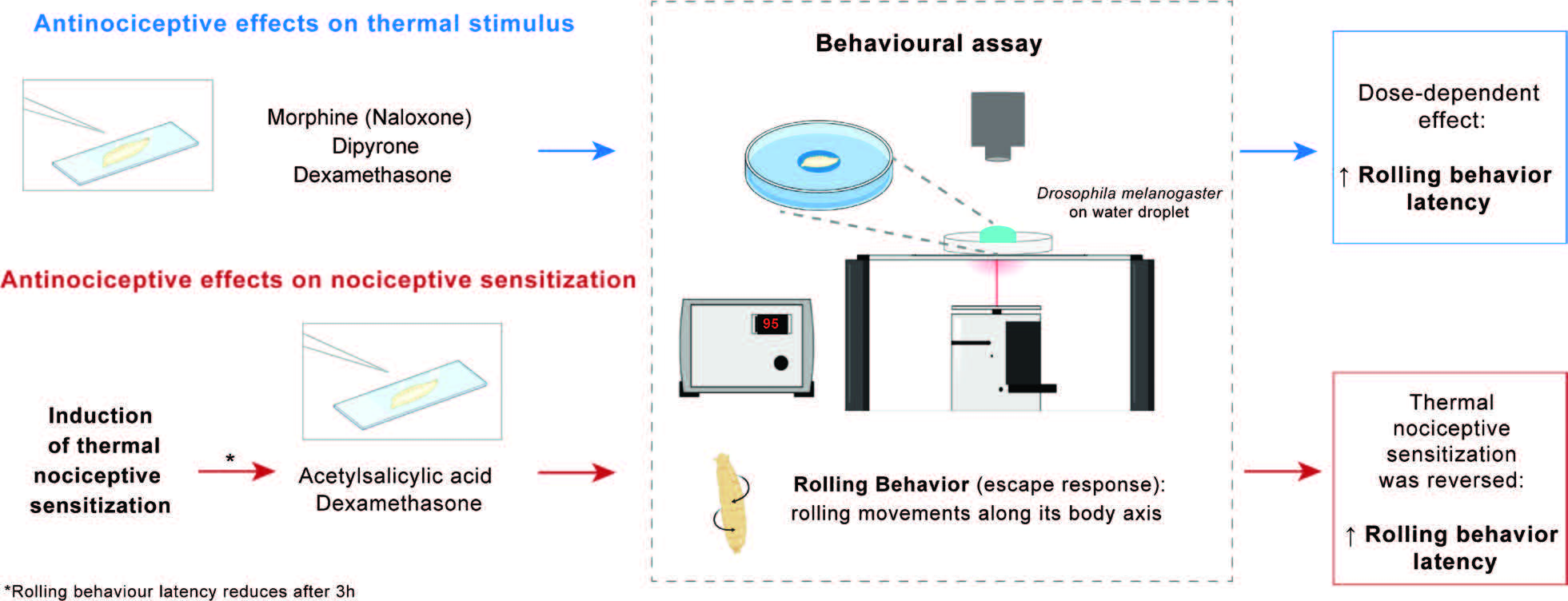Classical analgesic drugs modulate nociceptive-like escape behavior in Drosophila melanogaster larvae
DOI:
https://doi.org/10.3897/rrpharmacology.8.91390Abstract
Introduction: Nociceptive stimulus triggers escape responses in Drosophila melanogaster larvae, characterized by 360° rolling behavior along its own body axis. Therefore, it is possible to study analgesic drugs based on this stereotypical nociceptive-like escape behavior. Here, we aimed to develop an analgesic predictive validity test of thermal nociception through D. melanogaster larvae.
Materials and methods: We evaluated the effect of classical analgesics (morphine, dipyrone, acetylsalicylic acid (ASA) and dexamethasone (DXM)) in the rolling behavior latency of D. melanogaster larvae exposed to thermal-acute noxious stimulus and nociceptive sensitization paradigm. Drugs were injected into hemocoel (100 nL) before nociceptive measurement.
Results and discussion: Rolling behavior latency was increased by morphine (2, 4, 8 and 16 ng) in dose-dependent manner. Naloxone (4 ng) fully reversed maximum effect of morphine. Dipyrone (32, 64 and 128 ng) and DXM (8 and 16 ng) elicited dose-dependent antinociceptive effects. Exposure of larvae to 97% of maximal infrared intensity induced nociceptive sensitization, i.e., latency changed from 12 to 7.5 seconds. ASA (25, 50 and 100 ng) and DXM (4, 8 and 16 ng) were administered 150 min after nociceptive sensitization and displayed reverse sensitization in rapid onset (30 min after injection). DXM (16 ng), injected prior to nociceptive sensitization, displayed a delay in the onset of action (150 min after injection). Locomotor behaviors were not affected by analgesic substances.
Conclusion: Our findings open perspectives for evaluation and discovery of antinociceptive drugs using D. melanogaster larvae model.
Graphical abstract:
 Русский
Русский
 English
English

